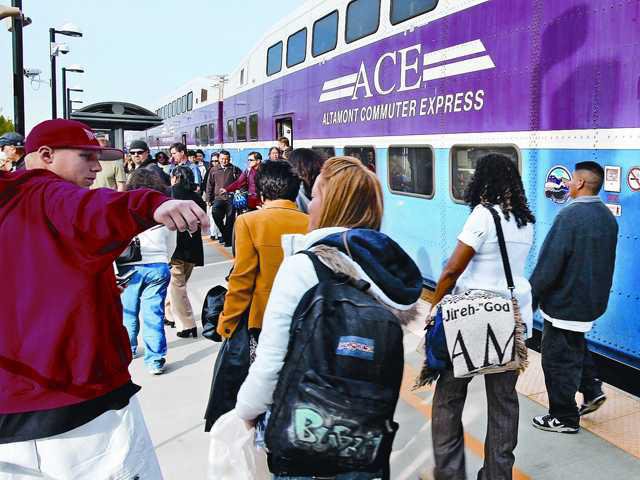One of the Bay Area’s most iconic radio stations is famous for broadcasting a traffic report every 10 minutes.
And as anybody who has ever traversed from San Jose to Santa Rosa and all points between during the week knows, they’ve got a captive audience – hundreds of thousands of people sitting in their cars and wondering how long the stop-and-go routine is going to go on.
Much the same way that Sacramento TV stations hold routine broadcasts from Placer County’s Blue Canyon when snow first starts to fall, exits on the Interstates become more identifiable as traffic markers than surface streets.
Concrete and steel structures get nicknames like “the maze” and “the skyway.” The “shortcuts” everybody always talks about have lines of cars moving like ants to a sugar cube. And it goes on like that, day-in and day-out.
That is, unless you take the ACE train.
In places like New York and New Jersey and Washington, D.C., people have been traveling by rail as an alternative form of municipal transportation for decades. The Pennsylvania Railroad – which most people will remember from Monopoly – served the people of Philadelphia and the northeastern United States for decades and helped provide connectivity that was unparalleled in the Tri-State area.
Even the Vice President took to the train. When Joe Biden was just the Senior Senator from Delaware he spent 90 minutes every morning riding the Amtrak from Wilmington to the Nation’s capital.
But it wasn’t until the late 1990s that the tracks that run between Stockton and Pleasanton were reinvented as an avenue for commuters as Bay Area home prices forced tens of thousands of people to flee to the Central Valley in search of affordable home ownership opportunities.
Transportation brainstorming sessions are seldom sexy. Whenever planners the San Joaquin Council of Governments or the San Joaquin Regional Rail Commission hold a series of town hall style forums in the communities that they serve, they’re typically sparsely attended and filled with bureaucratic rhetoric and stylistic speech.
But they’re vital to making sure that systems like ACE not only stay funded, but also continue to expand to meet the rising demand as the economy rebounds and more people seek alternative methods to get back-and-forth to work.
According to rail commission public affairs manager Thomas Reeves, the number of people that have come back to ACE over the course of the last year has been astonishing – making 2013 the best year that they’ve seen since the market took a turn in 2007 and jobs that were once abundant became scarce.
The premise is quite simple – operate eight different trains on tracks owned and operated by Union Pacific Railroad by keeping a very tight and specific schedule, and move commuters that would otherwise be on the roadway into comfortable railcars.
For about half the price it would cost in gas, somebody who lives in Manteca and works in Santa Clara can take the ACE Train for just over $200-a-month. That means you can work on your way to work – Wi-Fi will be standard starting next week and chair pods with tables are available – or catch that extra 90 minutes of sleep that you miss by getting up early.
Just this month the system broke the 100,000-rider mark. Thanks to an extensive web of local buses and shuttles, Bay Area employees are provided access to literally anywhere they need to go after getting off the train.
BART is just a short bus trip away. The Silicon Valley is further down the track.
And with four new train cars on order that will provide a mobile café for each of the segments that moves through the corridor every weekday, Reeves believes that ridership numbers will only continue to rise.
“Right now we’re looking at about 23 percent more ridership than we had at this same point last year, and I think that there are a lot of factors there – the economy is rebounding and people are getting hired again and they’re realizing that’s it is a viable option,” he said. “But people are also tired of the congestion. This is something that eliminates that.”
COMMUTERS ACE
Ridership up 23% on ACE trains





